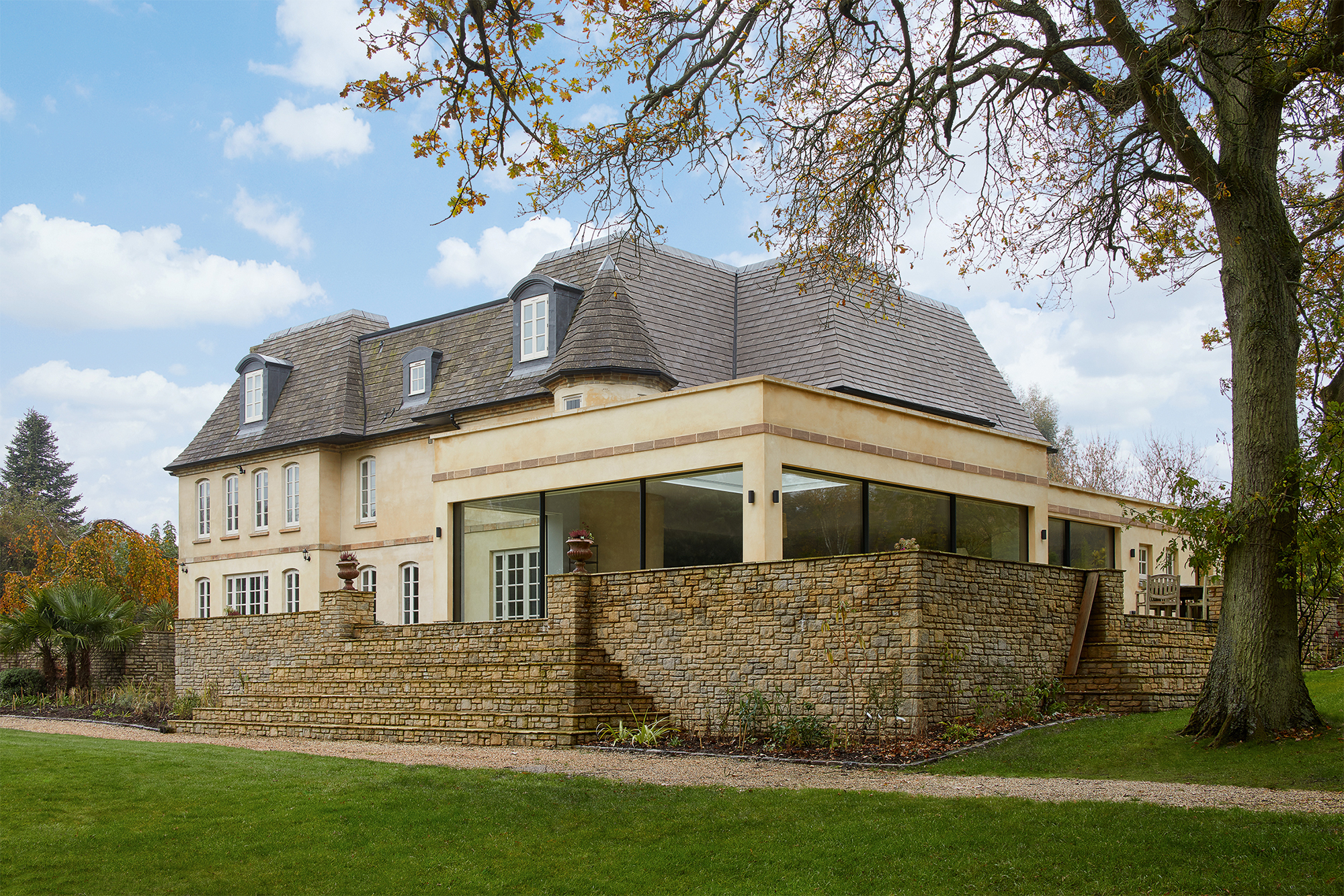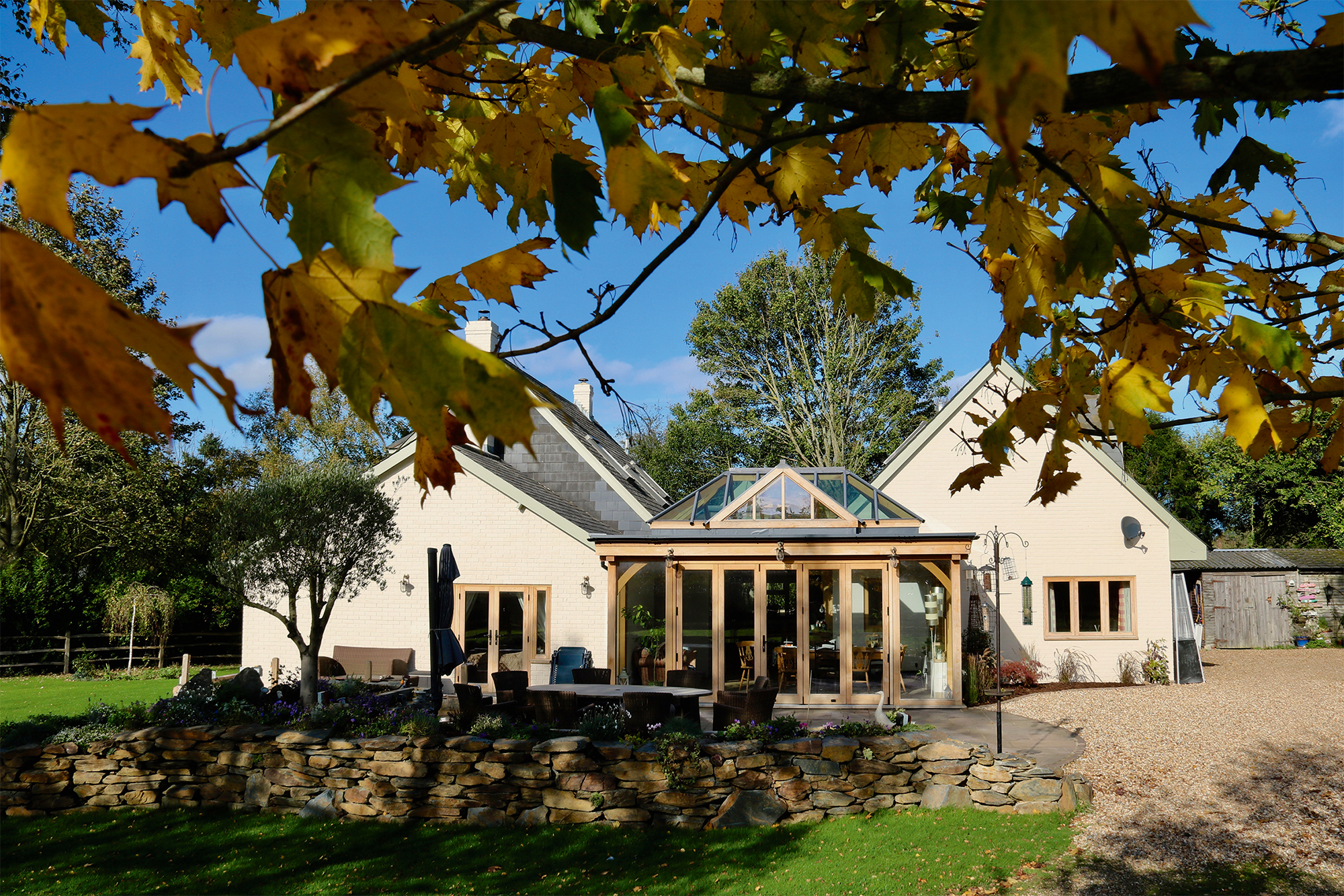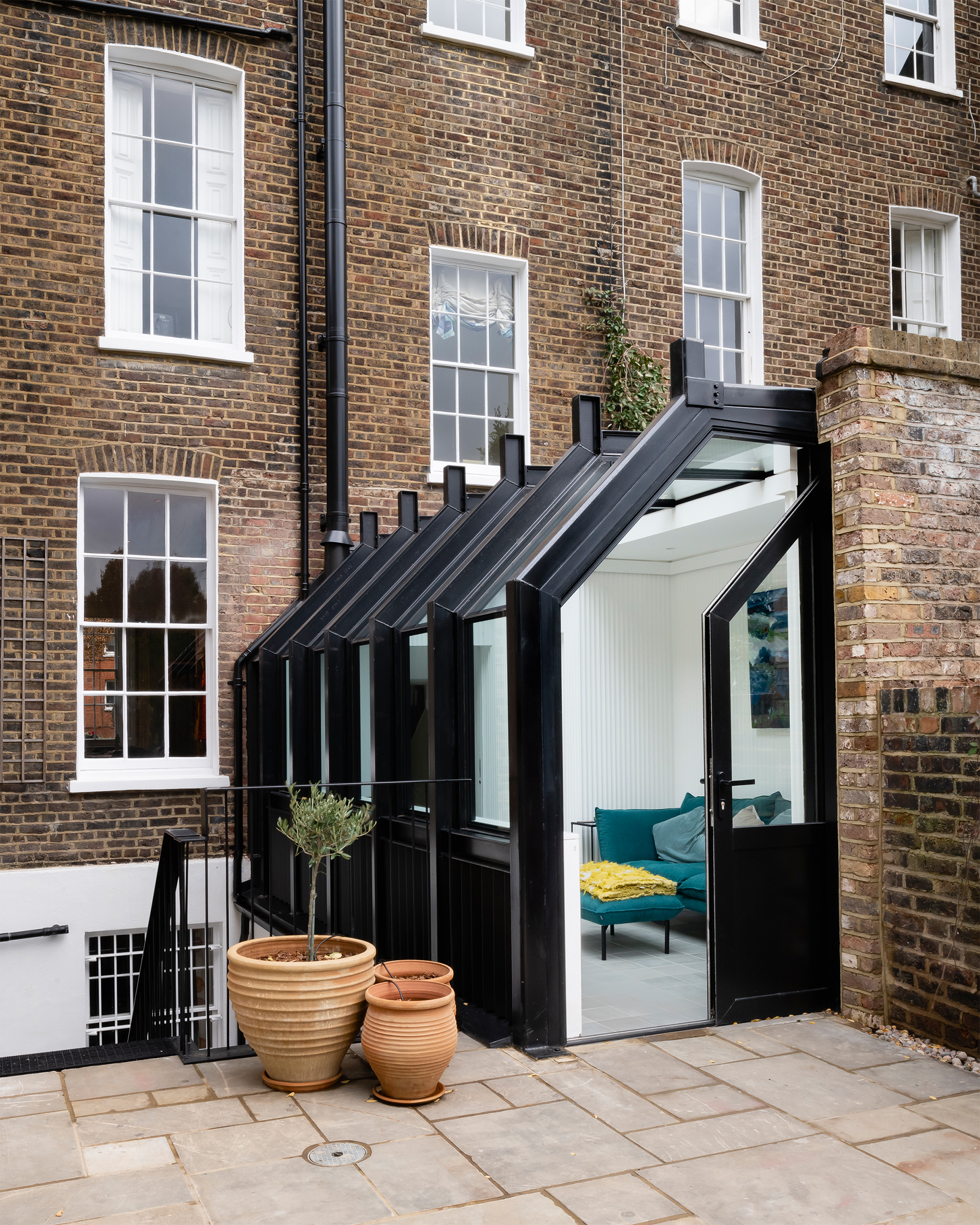After some fairly bad press in the second half of the 20th century, contemporary extensions have enjoyed a renaissance over the past several decades, becoming more popular with homeowners and planners alike.
However, the recent appointment of philosopher Sir Roger Scruton as the chair of the government’s Building Better, Building Beautiful Commission is a clear declaration of support by the UK government for his often-stated belief that only traditional or classical architecture is worth building.
The initiative is intended to promote good design and Sir Roger is in no doubt that the only way to achieve it is by looking to the past. So if you are intending to build a home extension, is this the right design solution or is it better to choose a style that reflects 21st-century innovations?

Architect Moreno Masey’s extension to a Berkshire country house straddles contemporary and traditional, following the materials of the existing dwelling but with a simple, minimal form with lots of glazing
The answer to this question is that neither is better – because truly beautiful architecture transcends style, and this is just as true now as it was 100 or 1,000 years ago.
Countless dreadful buildings have been built throughout history, but the advantage very old properties have over the new is that the ugly ones have long been demolished, leaving only the very best examples for us to admire.
The language of an aesthetic style is made up of all the features that help to identify it. In the same way that clear and consistent writing makes a good read, a building that has a well-considered architectural language of form, materials and construction details will have elegance.
Style traits
Before we look at whether your home merits a traditional or contemporary extension, we need to define what the two terms mean.
I take traditional to be houses that appear to be made from simple building materials, such as brick, stone, clay tiles and timber using the cost-effective methods of construction. This style applies to most ordinary properties built up until the 1920s.
The description contemporary encompasses any style that uses modern manufacturing processes and products in a way that is integral to the appearance of the building. This includes a variety of design techniques such as art deco, modernism, high-tech steel and glass, as well as the ubiquitous white render and gunmetal grey steel bifold doors that are currently all the rage.

A lantern-roofed new addition to a Hampshire home by David Salisbury is complemented by oak-framed windows and doors in the original part of the house (designed by the same company), to create visual continuity between old and new
The design of traditional houses is rooted in the skills of craftsmen and the limitations of the tools and materials at their disposal. In the past, natural products such as clay bricks and tiles were readily available and the cost of using them was kept down because the builders knew their limitations and stuck within them.
Read more: Build It’s design guide to the various types of extension
Rectangular plans were the easiest to erect, with room sizes limited to the maximum span of a simple wooden beam (roughly 6m), with pitched roofs hanging over the tops of the walls to throw off water. Cills and copings were incorporated to protect the edges of the walls from rain running down them.
Practicality and cost usually trumped accuracy, so architraves and skirting boards were used to hide the irregular nature of junctions to walls and around openings.
The style of each period reflects the time in which they were being built as well as the materials locally available.

Can Architects was inspired by the shape of a Georgian glasshouse for this small but beautiful extension to a listed London townhouse [Credit: Jim Stephenson]
Areas of glass are now available that are far larger than a century ago and so this is one of the principal features of the contemporary look. Smooth surfaces with clean lines, thin joints and low tolerances are all easily achievable nowadays because we have sophisticated manufacturing methods.
The post Should you choose a traditional or contemporary home extension? appeared first on Build It.
Article reference Should you choose a traditional or contemporary home extension?
No comments:
Post a Comment